Thus, I only have time to give you an approximate idea of how the landing is arranged.

If you want to fly a real Shuttle, please make sure you read the instructions for use. In addition, you will need a time machine, as the last shuttle landed more than five years ago.

Now they live in museums and can not take off. Nevertheless, I, like all of you, have been in a state of denial of this fact for the past five years. Especially you, Steve Feldman. So, in my world, the shuttle is still flying and we will just use the present for this conversation.

So let's get started. Our goal is to land on the runway (hereinafter referred to as the runway) at the Kennedy Space Center in Florida, but let's assume that we now fly in orbit over South America at a speed of 27,700 km [per hour] in the wrong direction.
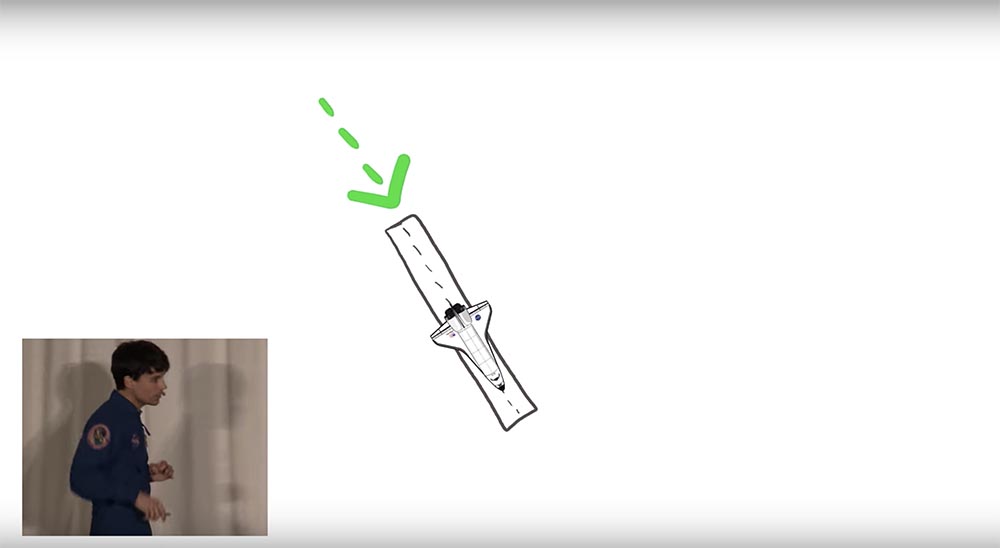
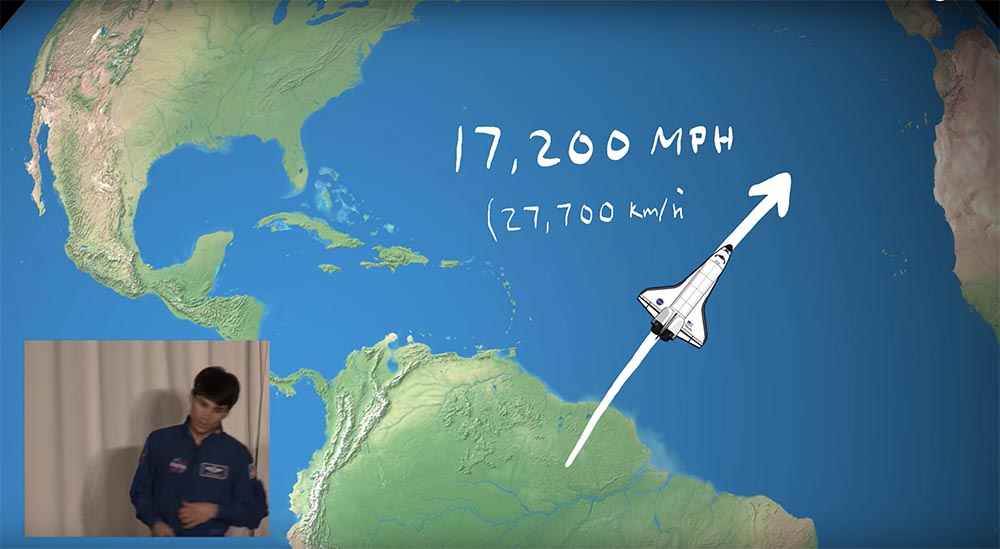
Well, we can't just turn around. Changing the direction in orbit requires crazy energy costs. So what do we do?

Well…
In principle, nothing. It turns out that the Earth rotates, which means that the Kennedy Space Center itself will come to us, you just have to wait.
So on this turn, when we fly to the Kennedy Space Center, we just stop! It always does that.
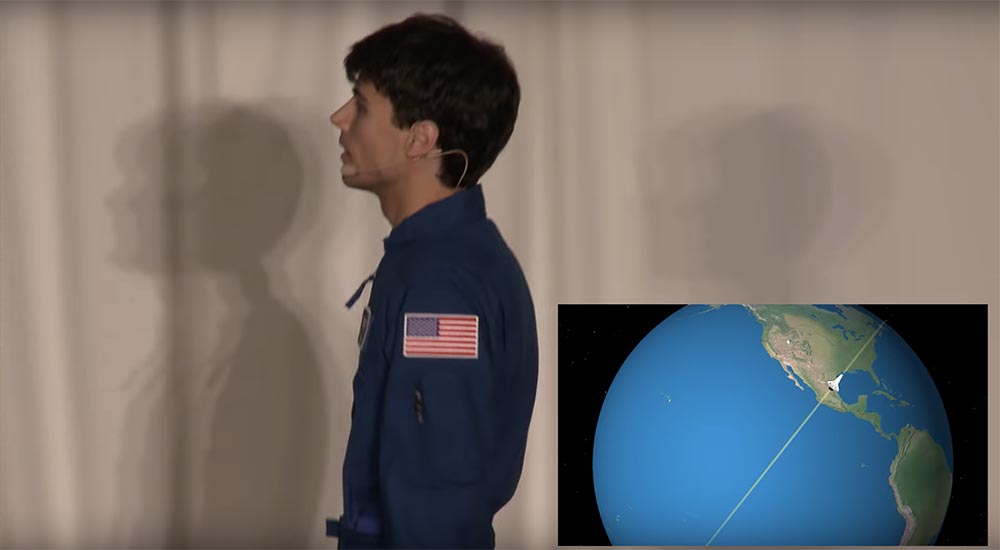
It turns out that we are still flying at speeds in excess of 27,700 km / h. So that you can imagine how fast this is, the runway we are about to land on has a length of 4,500 meters. These are approximately 40-45 soccer fields, depending on what you consider a soccer field.
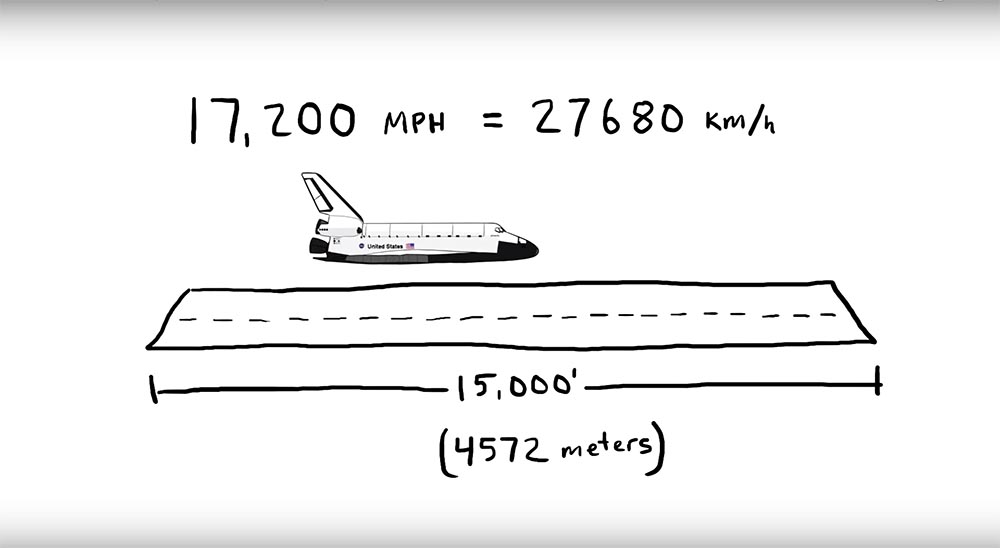
This is one of the longest runways in the world, but at our current speed, we will fly its entire length in just six tenths of a second. We could get from New York to London in just 12 minutes. So we need to slow down. Strong.
Well, the shuttle has great engines with tons of power to slow us down. So let's just launch them again! Ahem ... it becomes ... a bit awkward. You see, we, as it were, were left without fuel. In our defense, let’s say that launching is, in fact, an expensive undertaking. These two boosters on the sides, they burn 1.1 million pounds or five hundred thousand kilograms of solid fuel in just two minutes, and then we just throw them away.
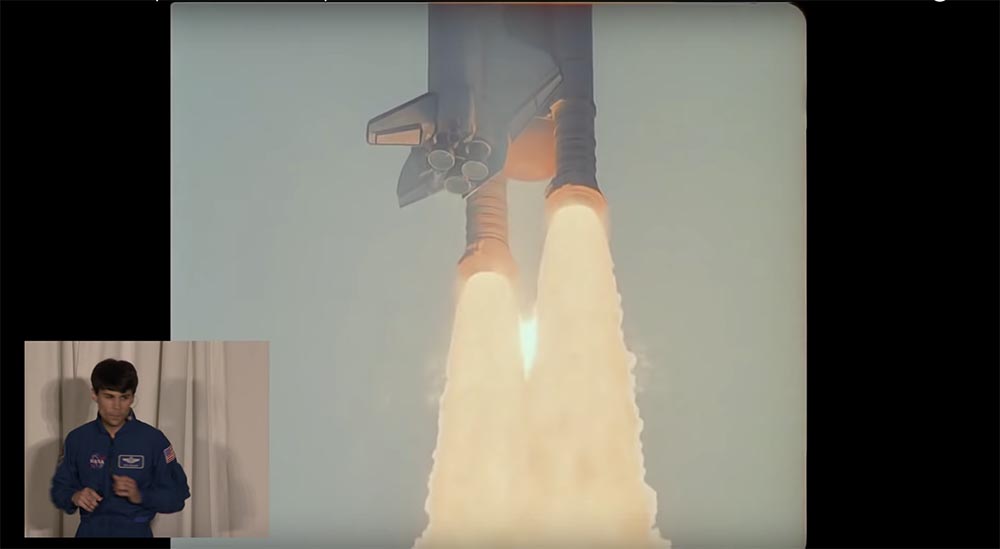

This large orange outer tank contains an additional 1.6 million pounds, or seven hundred twenty five thousand kilograms of liquid fuel for the Shuttle's three main engines, but after an eight-minute launch, they too were empty. So we must throw them out. Till!
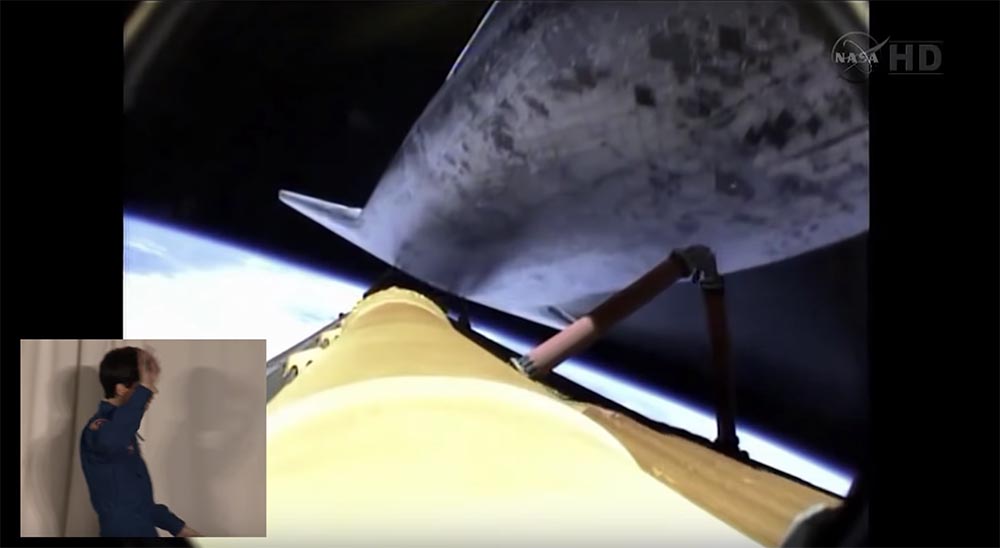
All we have left are these tiny shunting orbital engines that together produce less than 1% of the thrust of the main engines. They will not be able to slow us down at a speed of 27,700 km / h, but there is one trick.
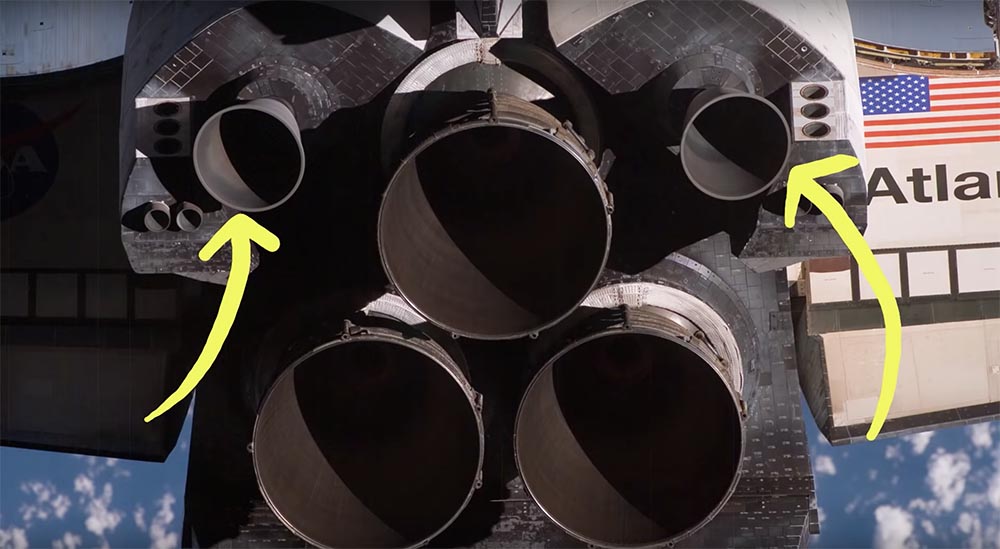
In fact, we do not need to slow down so much. If we slow down by only 360 km / h then this will be enough to begin to fall into the atmosphere, where air resistance can do the rest of the work.

Thus, we burn fuel to leave orbit, which takes about three minutes, using orbital shunting engines. After that, we're just going to drift for about half an hour before we reach the atmosphere. But we cannot enter the atmosphere backwards!

First of all, we will look ridiculous, BUT what is, perhaps more important, the air resistance is so great that in the end we will melt. Then, we lift the angle of attack to 40 degrees. This is the angle between the direction where you are attracted by speed and where the bow of the ship is directed.
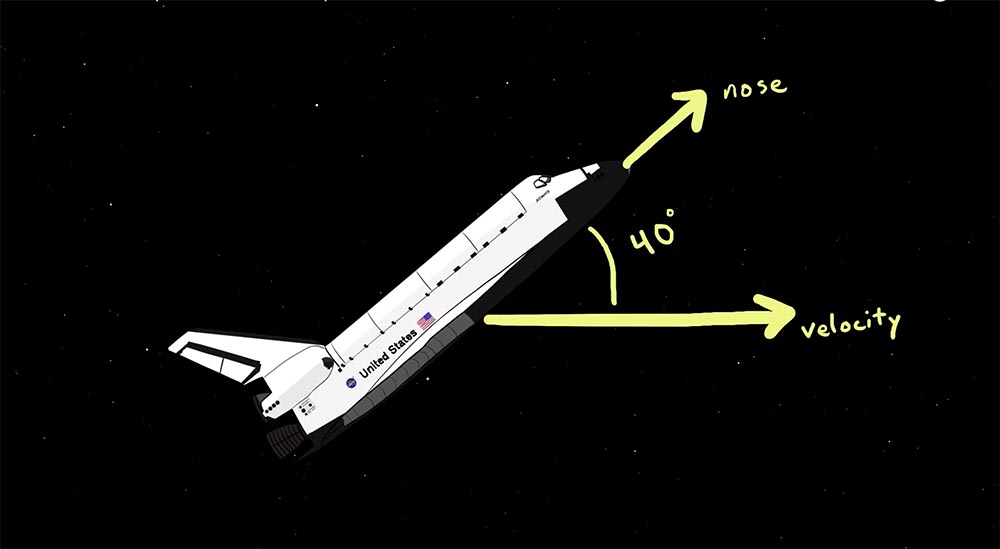
At this angle, our fusible aluminum body can be protected with more than 20,000 silicon tiles, as well as these reinforced carbon-carbon panels on the nose and front edge of the wings.

Interesting fact: the surfaces of the orbital apparatus that are heated are covered with these thermal plates, as well as with nomex fabric, which covers the wings and
cargo doors. All this does not at all look like an ordinary plane, but okay, back to the descent.

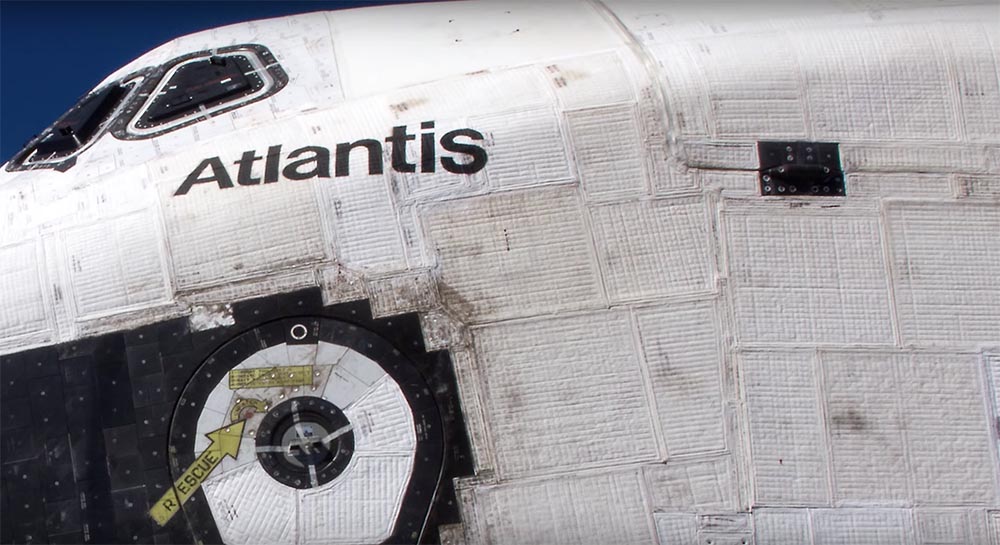
So, if all goes well, we must come in contact with the first layers of the atmosphere at an altitude of 122 km, about 8000 km from our landing site.

This is all good, but after a few minutes there is some problem. We have wings! And the wings create lift, and as they plunge into denser air, they generate so much lift that we actually begin to rise and leave the atmosphere again.
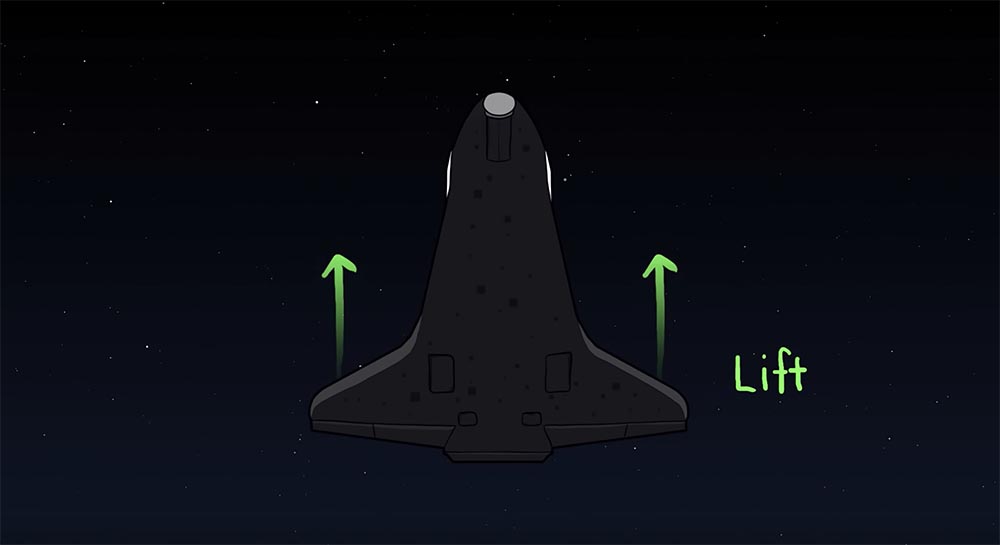
This is not good. We actually need to keep going down. Well, we could lift our nose even higher ... This would increase resistance and decrease lift, but we run the risk of overheating, exceeding loads, or simply losing control of the orbiter.
So, we cannot change our angle of attack, which means that we cannot change how much lift we generate. However, we can change the direction of this force. It does not have to be upward.

If we bank to the right or left, we can direct our lifting force to the side, and not up. Well, this will actually allow us to control the rate of decline. With a steeper roll angle, we will create less lifting force directed upwards, so that we will go down faster. In the same way, with a slight roll, we will generate more upper lift, so we won’t fall so fast.
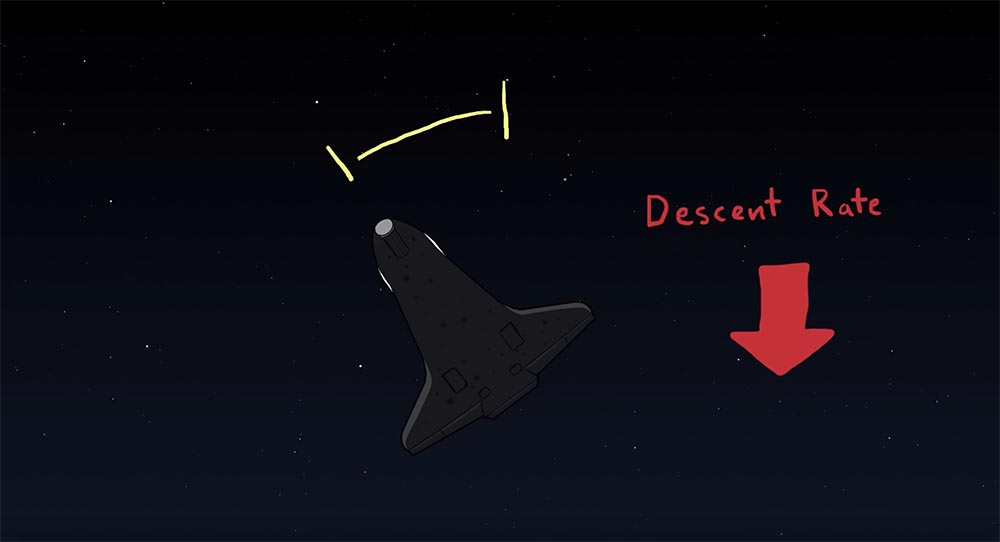
But this raises an interesting question: how fast do we want to go down? In fact, entry into the atmosphere is a big problem of energy distribution. We have a lot of speed and a lot of distance to overcome. The goal is to reduce speed in such a way as to overcome the desired distance.
If we slow down too quickly, we will not reach the landing site, and if we slow down too slowly, we will rush right past the Kennedy Space Center and crash in the Atlantic Ocean, which is also bad. Thus, we found out that in order to control the descent, we just need to change the angle of heel. But how do we control braking (how fast do we slow down)?
Remember, first of all, we slow down, because we are faced with air. If we want to slow down harder, all we need is just more air. And where is more air? Of course, lower in the atmosphere - it becomes denser as you descend.
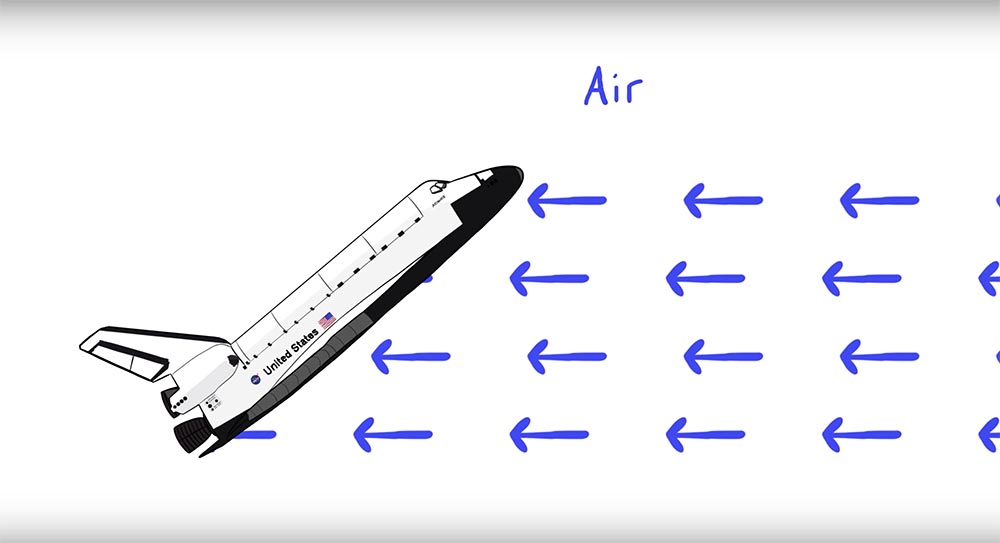
So we kind of figured out the right tools to control the slowdown, because if we bank more, we will fall faster, as you already know. Then we will soon reach dense air, and dense air will help us slow down more.
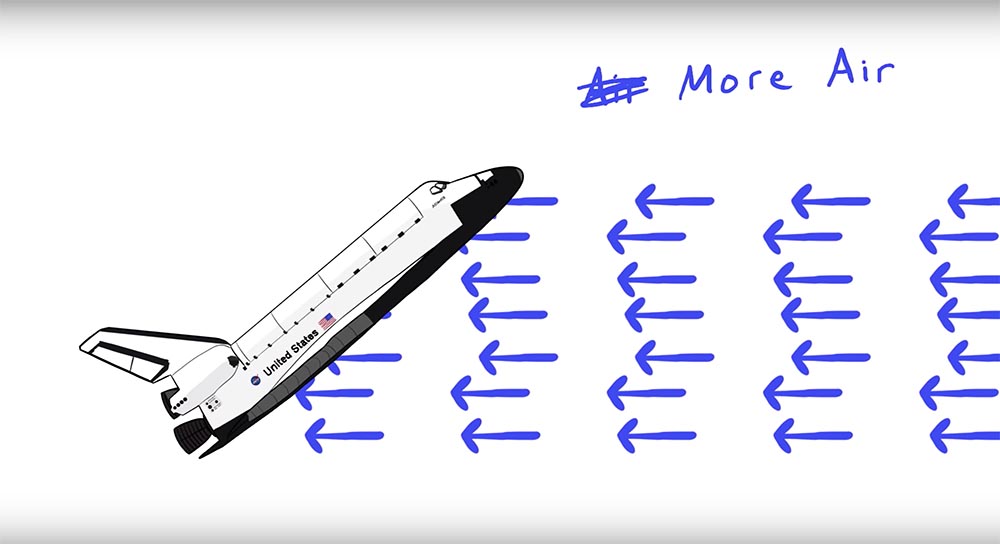
Conversely, to give a smaller roll, then we will not go down so quickly, so we will be longer in thin air, which means that braking will be slower.
So, there is only one problem: we are starting to deploy. The roll angle does not help as we had originally hoped. Therefore, NASA turned to its engineers. “This is a very serious problem! We cannot take and land in Panama! ”

And the engineers replied: “Well, then just turn the other way. This is not rocket science, and why are you wasting our time, Steve? ”
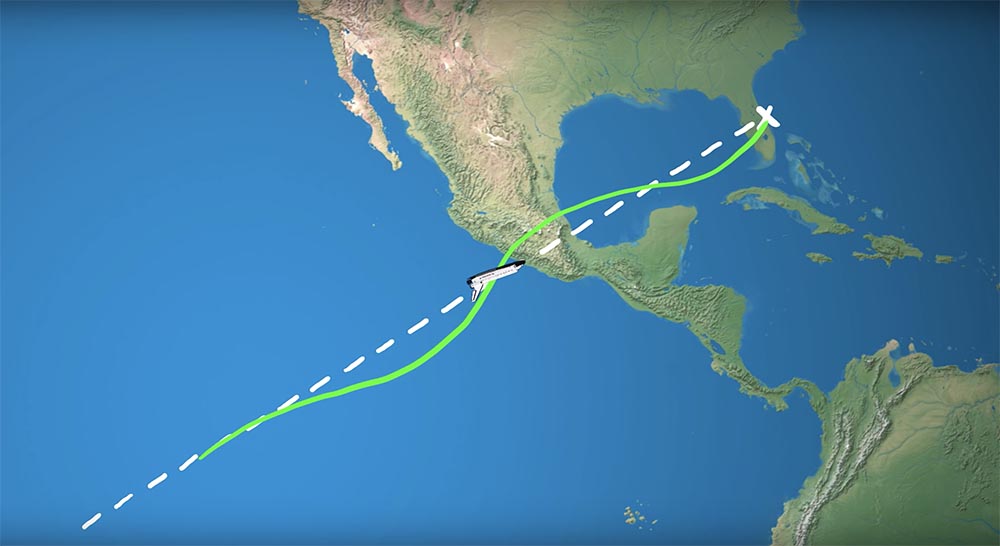
So, we get such an S-shaped curve for the descent, but it works. Therefore, before moving on, let's see what we learned. We started with a de-orbiting maneuver lasting about three minutes. Then we drift to the dense layers of the atmosphere and in the process we set the angle of attack at 40 degrees so that the heat shield can protect us. As soon as we enter the atmosphere, everything is controlled by a roll angle. If it seems that we will fly over the strip, then increase the roll, and slow down faster. And if we are facing a shortage, then we reduce the roll and the slowdown does not happen so quickly. And even if we deviate too much from the goal, we just need to turn in the opposite direction, making the so-called “balancing turns”. So they are called in NASA.
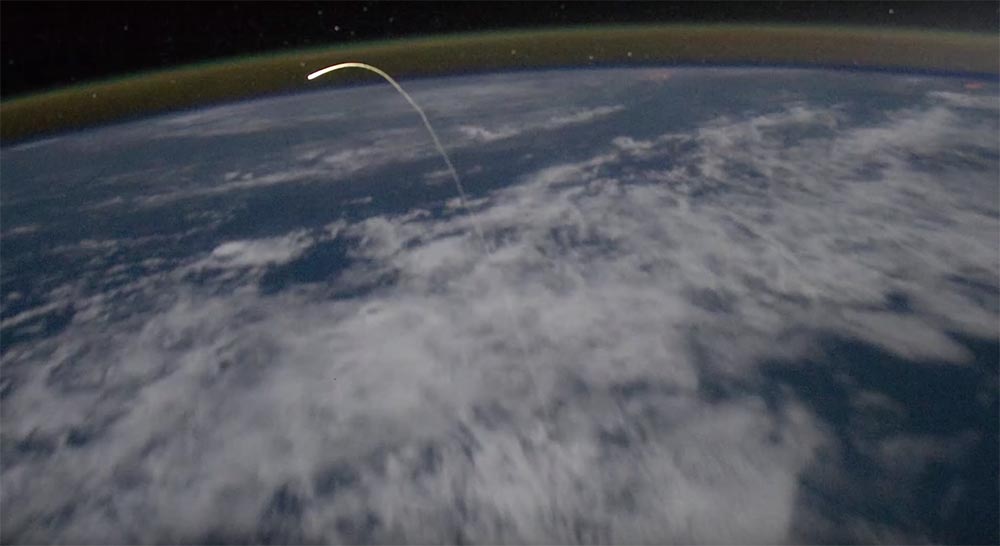
This is a photo of the return of the last Shuttle during the STS-135 mission. Something interesting about this glow when entering: technically, this is not a fire, although it is very similar. This is, in fact, a hot gas that is so hot that the electrons break away from their atoms and molecules, and they begin to glow, this soft orange color. This is another state of matter called plasma, which, even if you never heard of it, you saw it constantly, in the form of neon signs, lightning, and most importantly - the Sun is a large luminous ball of plasma.
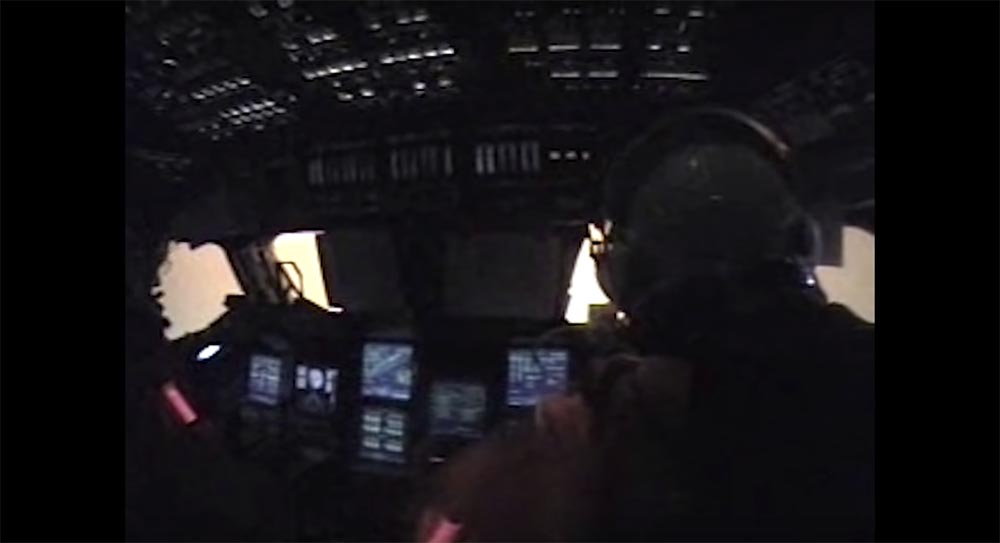
Now, while we slow down, we get less of this plasma and we get less heat, so we worry less about melting. But we are more and more preoccupied with just falling through the air. We are really turning from a spaceship into a plane.
At a speed of 13,000 km / h, we begin to lower our nose, lowering our angle of attack. Then at a speed of 2750 km / h, we switch to a completely different control mode called Energy Management in the Terminal Zone, or TAEM.
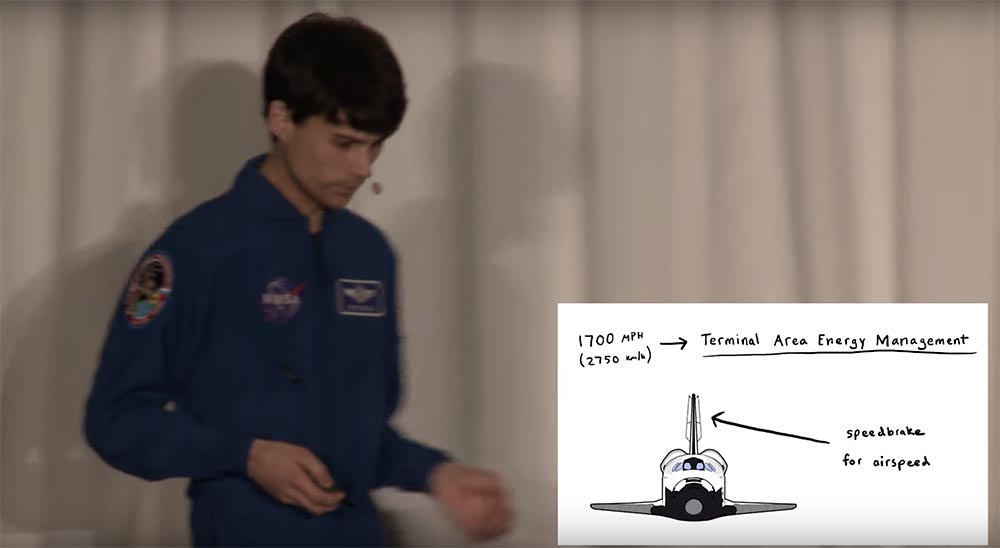
Now we fly like a plane. Very bad plane. We do not have engines, but we function roughly like an airplane. We lift our nose to control our speed of descent.
We roll to turn, and we still have this speed-dropping thing that can open and close to help us control our flight speed.
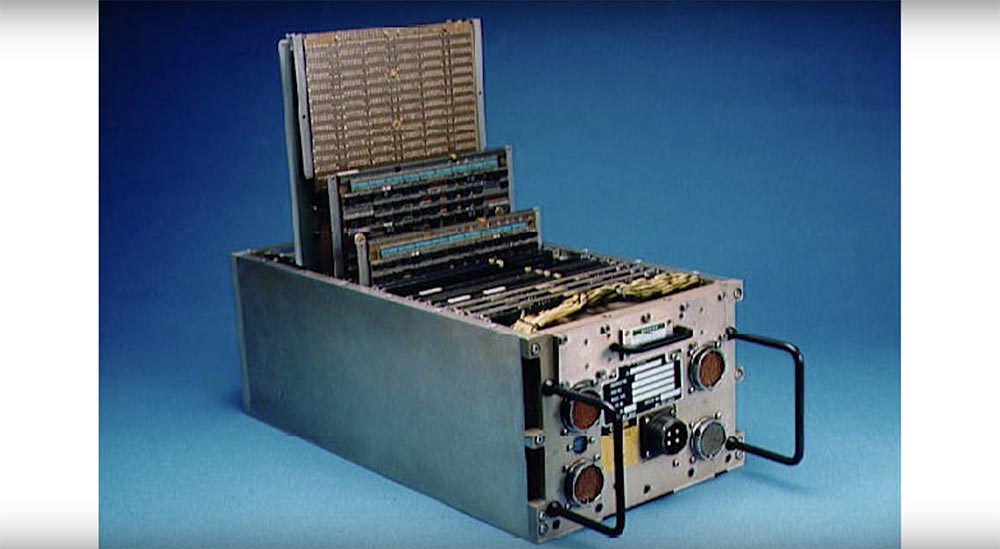
Also, until that moment we flew on autopilot. The autopilot is controlled by five of these backup computers, each with a whole megabyte of memory. You would not be able to put there even one photo from the phone, but he managed the Shuttle quite well.
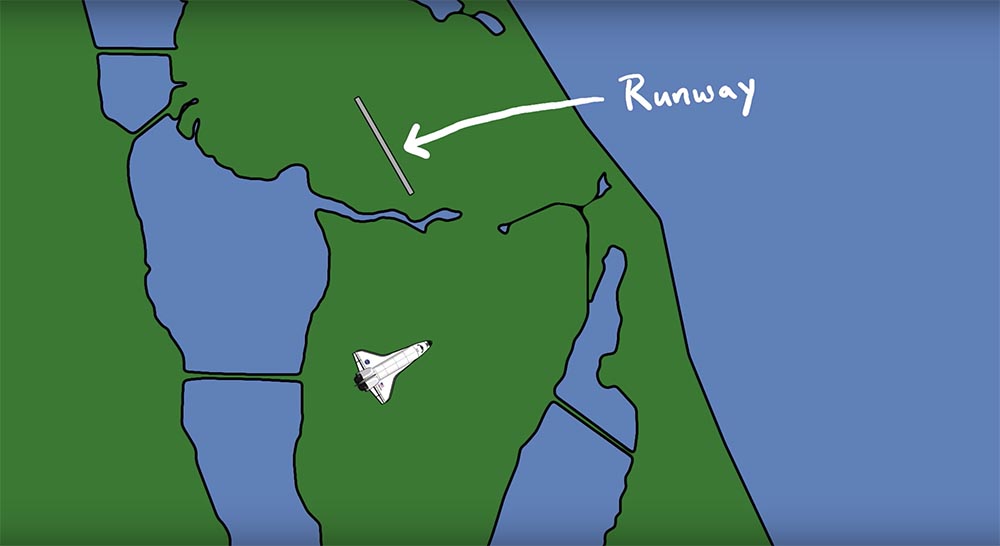
But when approaching the runway, the Commander takes control, this mode is called CSS, i.e. Lever-Steering control (not cascading style sheets). However, the Shuttle is computer controlled, in fact this means that computers control everything without stopping. Even during CSS, the computer simply pretends to let people fly, just like in a routine.
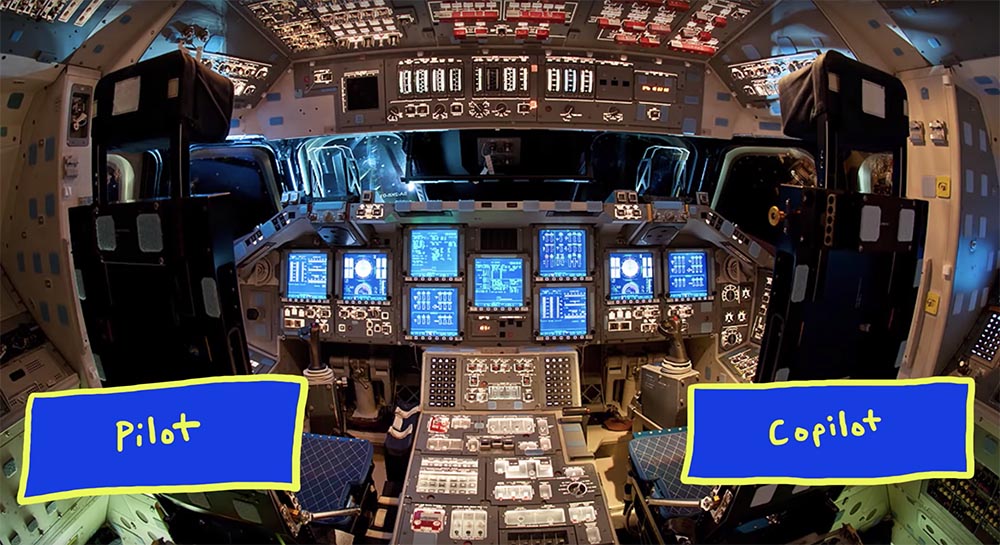
Note: no Shuttle pilot wants to be called a co-pilot. It is simply offensive. In general, in the left seat we have a commander who controls the flight. And in the right seat, we have a pilot. And does not fly.

I'm not quite sure that NASA did not do this to confuse the media, because it works very well.
But back to TAEM. TAEM leads us past the center line of the runway, and then along this imaginary spiral called the Course Alignment Cone. If everything went well, we will be aligned with the runway and will plan from a height of 3000 meters.

Of course, if we were on a regular airliner, “planning” would mean a three-degree decline path at a speed of about 255 km / h, with a speed of decline of about 230 meters per minute. But this does not work for us. The Shuttle has short wings and a large, thick, round nose.

It is affectionately called a flying brick.
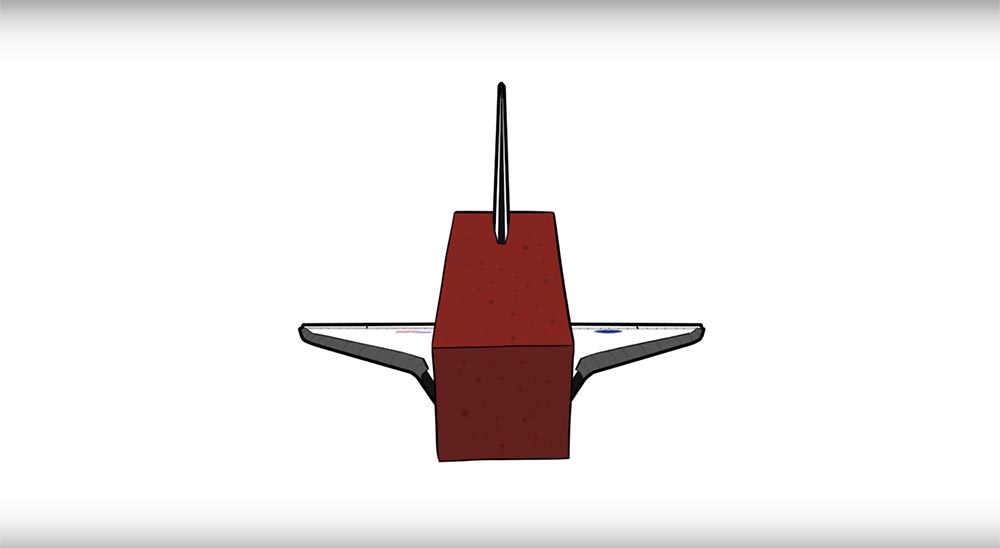
NASA astronauts are training in a modified Gulf Stream II aircraft, which, to simulate the non-aerodynamicity of the Shuttle, flies with the landing gear extended and with reverse thrust engines.
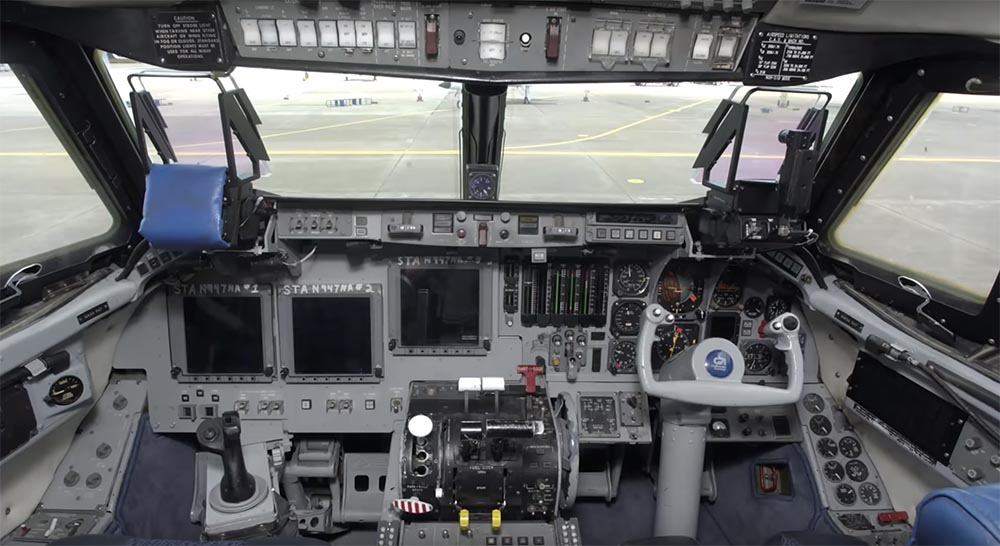

Thus, we need a descent, a little more suitable for a brick with an inclination angle of 20 degrees, a speed of 555 km / h and a descent rate of more than 3050 meters per minute.

To provide you with context, how high is the speed of descent of 3050 meters per minute, it is about 190 km / h. This is the critical speed for a skydiver in freefall.
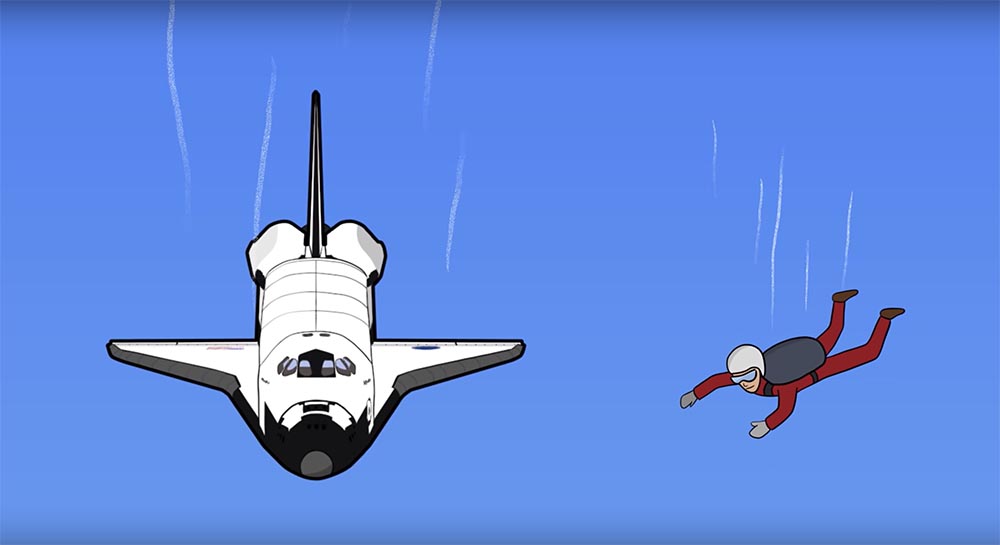
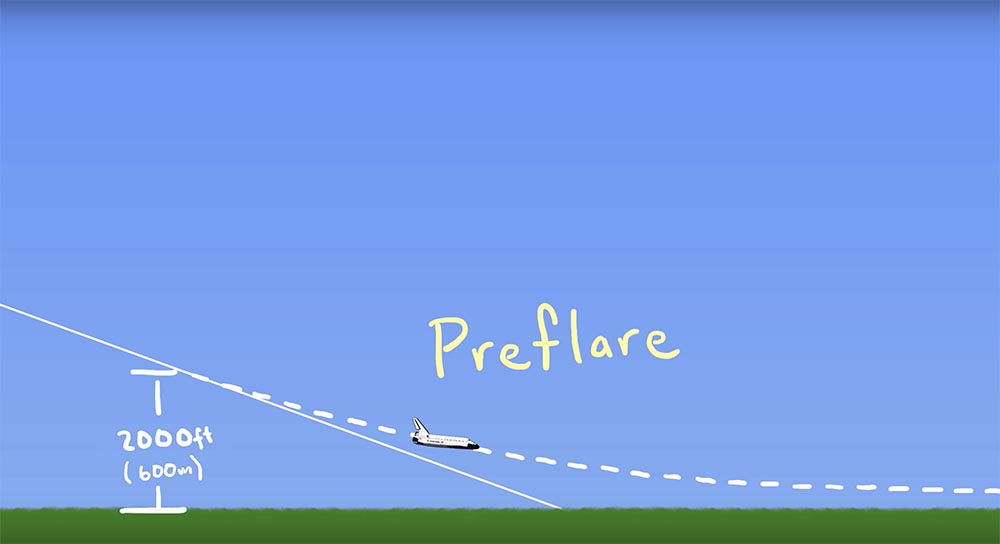
Obviously, we will not land this way, so at an altitude of 600 meters, we begin to raise our nose to a state called pre-landing maneuver. We are wasting the energy that we have in the form of flight speed in exchange for reducing our crazy speed of decline. Chassis are available at 91 meters.
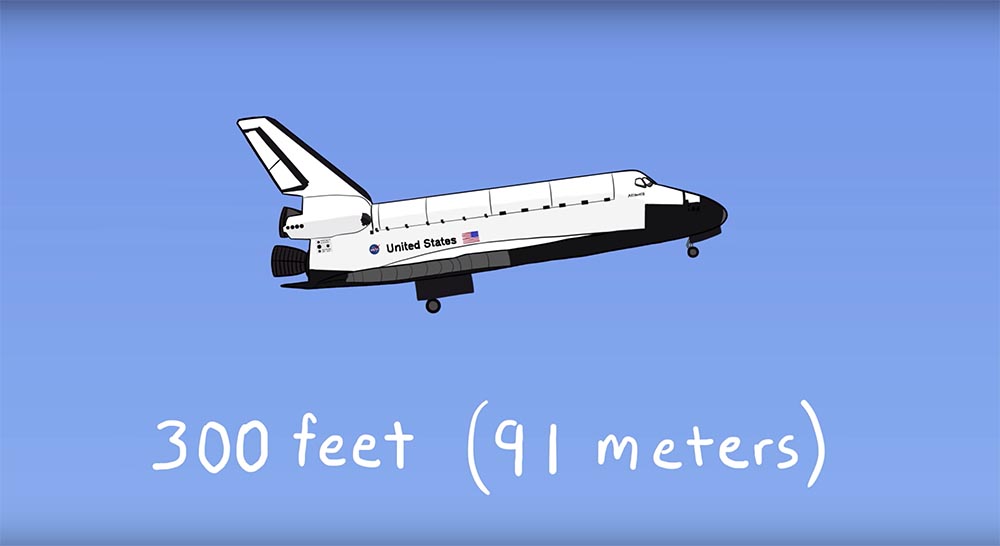
We are waiting for the last minute, since the chassis cause strong resistance, and after their release in flight, they can no longer be lifted. We cross the runway just 8 meters away, the flight speed drops like crazy. Touching occurs at a speed of 410 km / h, the braking parachute is deployed, the nose gradually drops down.

Just an hour and five minutes after our braking maneuver on the back of the planet, we landed Space Shuttle.
... from space!

Naturally. Where else would you plant it?
I will show you how it looks from the pilot's point of view, because as a pilot, I think this is the coolest thing in principle.

Of course, none of those to whom I showed this agrees that this is the coolest thing in history, but I hope Steve agrees.
This is the night landing of the STS-115. We are flying around the Course Alignment Cone right now. We look through the pilot's visual display. These are all these flashing green numbers. The flight speed is indicated on the left. We have approximately 260-270 nodes. On the right is the height. Now we go below 8500 meters. Soon from above, you will see the east coast of Florida appearing in sight.

These are lights south of the Kennedy Space Center.
In the center of the screen there is a square with a kind of fuzzy diamond emanating from it. This diamond shows our course. In general, the commander, in fact, is now trying to bring this box to the diamond, and this will keep the Shuttle on the right path of descent along the Course Alignment Cone. By the way, this box will turn into a circle after a while ... This is not very important. Well, that’s important, but I don’t want to explain how. In the lower part, which has now disappeared, because the management is open, apparently, this thing is here, it says: CSS, and HDG is written above, i.e. course. This is the Course Alignment Cone, and on the right there is a horizontal line with a pair of triangles pointing to it. The upper triangle shows the air brake where it is now. It is open at about seventy percent, and the lower triangle shows where the computer wants to put it, which is currently the same. You will see how he makes adjustments as he moves, and he will make a big adjustment at 900 meters (shortly before landing).
Here the runway appears in sight, and from 3000 meters. I’ll just let the astronauts speak for themselves, because I think it’s much more interesting. The main voice that you will hear is the pilot speaking to the commander during the landing.

Pilot (PMT): “Correct.”
Mission Specialist 2: “Trail of Flaps.”
PLT: "So here it is, 9000."
PLT: "Two more and two, looks appropriate."
Commander (CRA): “I agree.”
PLT: "8000."
KDR: “Weak headwind on deck.”
PLT: "7000".
PLT: “You're going well.”
KDR: “I agree.”
PLT: "6000".
PLT: "Okay, 5000. My radar is fine, your radar is fine."
KDR: “I agree.”
PLT: “I will look at the image pickup device and
we go 3 ... about 3000. "
KDR: "3000. Air brakes. "
PLT: "... the air brakes seem to be moving around about 27, it seems."
KDR: “Good.”
PLT: “Good, 2000. Preplant. Chassis ready. ”
KDR: "I understood you, pre-boarding."
PLT: “I see you in the preplant. I see you are a little behind. It looks appropriate. 1000. The maximum speed is 313. 400. "
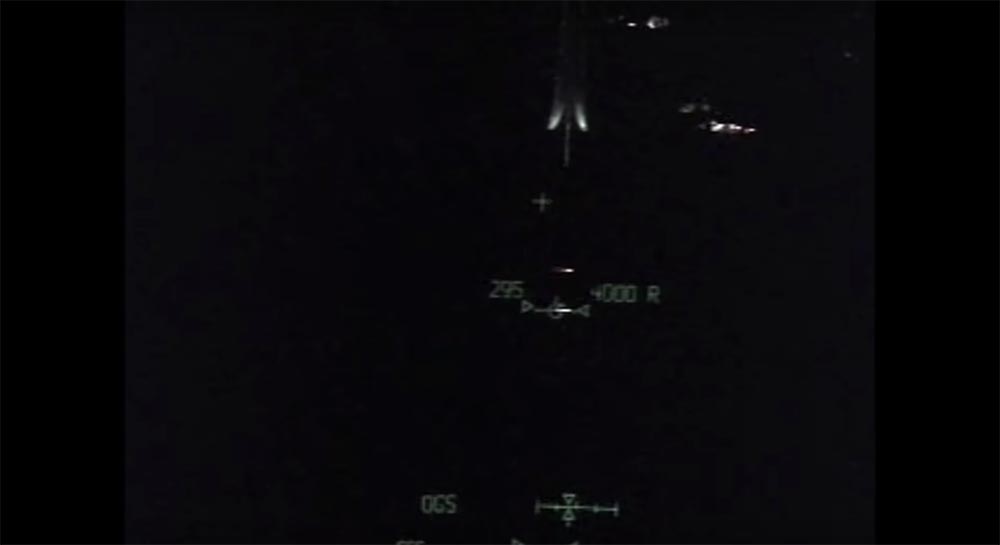
KDR: “Chassis released.”
PLT: “And here is the chassis. Chassis are moving. I see you dropping at the ball bar. You can add an interface if you haven’t added it yet. Shows that a little high. "
KDR: “I agree.”
PLT: “Tall, there are a hundred feet. 255. A lot of energy. The correction is excellent. There are 50. I see the nose rises. 30, 230. Well, not too high, not yet time. Here it is. There are 22, 10. You can start lowering it. So here it is, 7, 6, 5, 4, 3. Touch. There is a parachute. ”
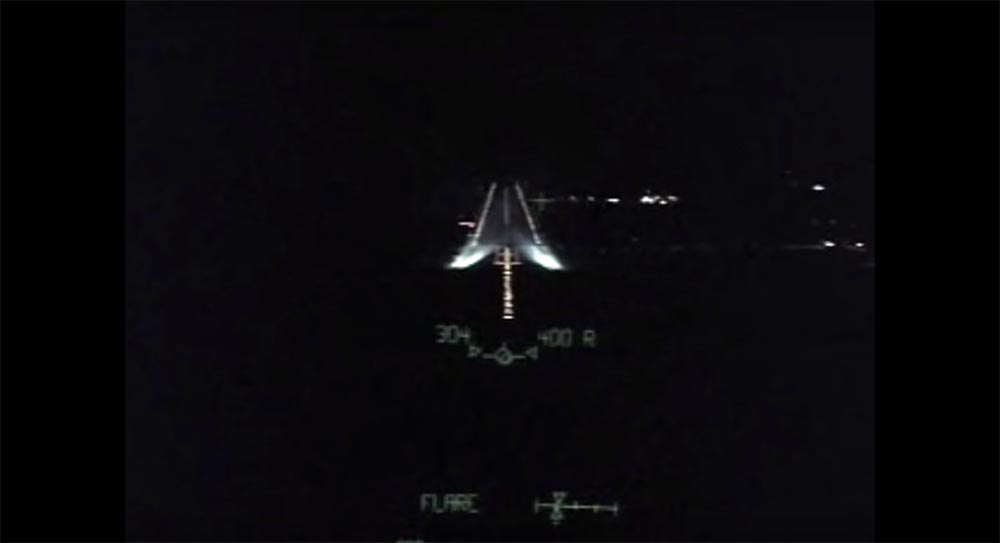
KDR: "I’m extinguishing rotation."
PLT: “And I see you go down one and a half. Down one and a half. Down one and a half. Good touch. ”

MODERATOR: So, remember: engines are not available to them, so this is the one and only chance to land. I would also like to note that this video began about three and a half minutes ago at 11 kilometers. This is a fairly typical flight altitude for an airliner. So imagine the captain of your plane saying, “Ladies and gentlemen, we are starting our initial descent to Philadelphia (or somewhere). We will be on earth soon. ”
And by “near time,” he means three and a half minutes. But the Shuttle flew that way, and that’s it.
Thanks.
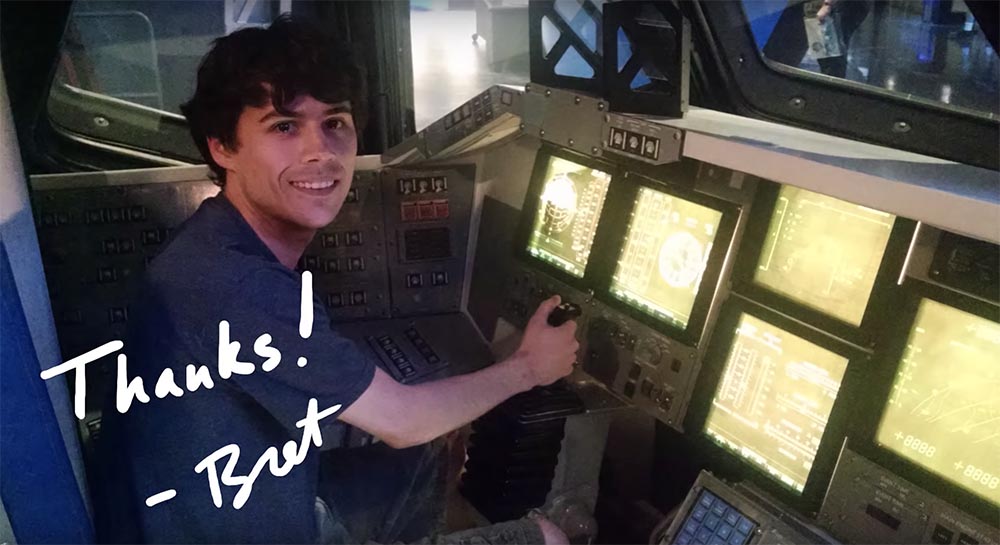
[Thanks! - Brat]
Thank you for staying with us. Do you like our articles? Want to see more interesting materials? Support us by placing an order or recommending it to your friends, a 30% discount for Habr users on a unique analog entry-level server that we invented for you: The whole truth about VPS (KVM) E5-2650 v4 (6 Cores) 10GB DDR4 240GB SSD 1Gbps from $ 20 or how to divide the server? (options are available with RAID1 and RAID10, up to 24 cores and up to 40GB DDR4).
Dell R730xd 2 times cheaper? Only we have 2 x Intel TetraDeca-Core Xeon 2x E5-2697v3 2.6GHz 14C 64GB DDR4 4x960GB SSD 1Gbps 100 TV from $ 199 in the Netherlands! Dell R420 - 2x E5-2430 2.2Ghz 6C 128GB DDR3 2x960GB SSD 1Gbps 100TB - from $ 99! Read about How to Build Infrastructure Bldg. class c using Dell R730xd E5-2650 v4 servers costing 9,000 euros for a penny?